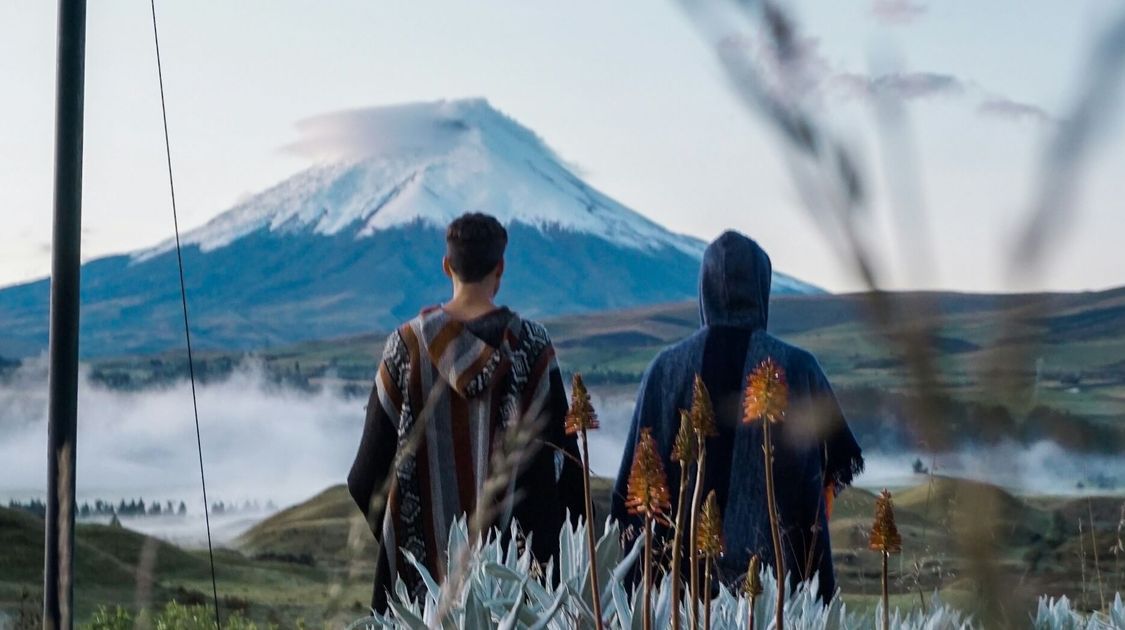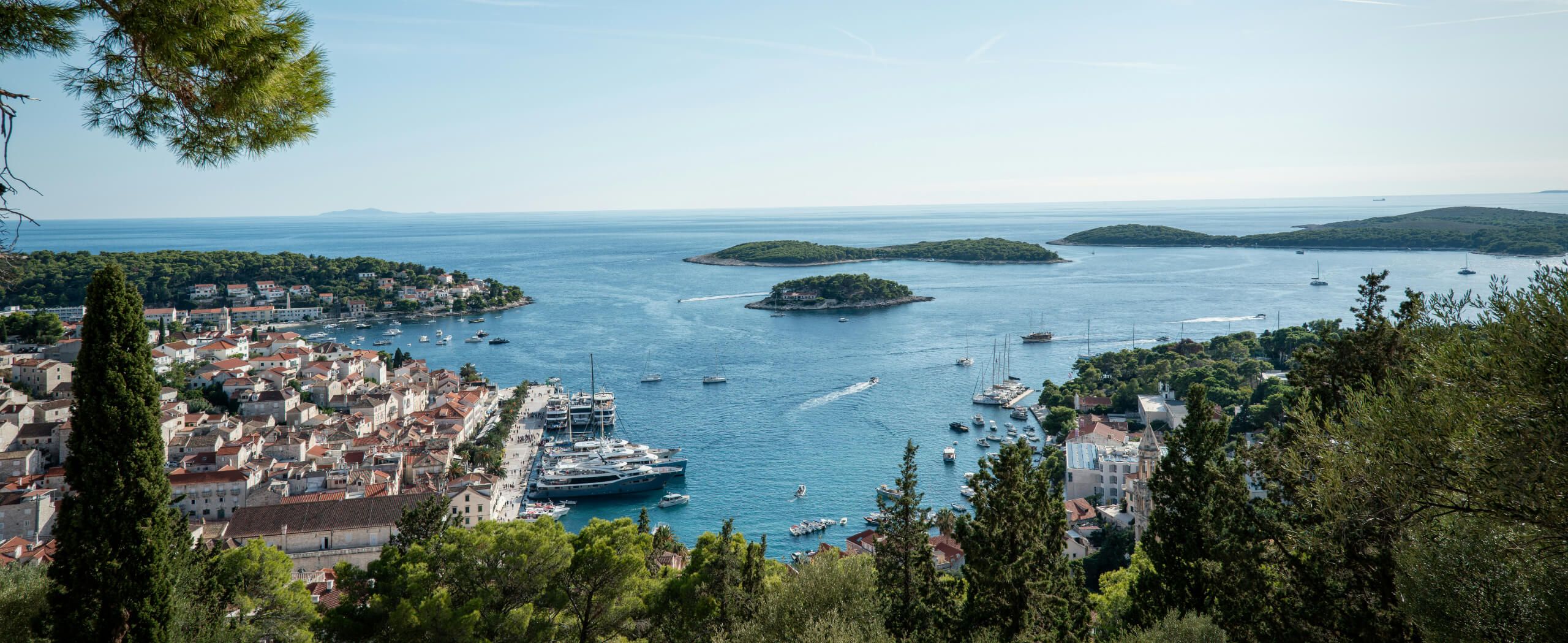

BlogDestinationsBest Treks in Ecuador: Your Ultimate Andes Adventure Guide
Best Treks in Ecuador: Your Ultimate Andes Adventure Guide
Alex Todd
Jul 2, 2025
Ecuador may be one of South America's smallest countries, but it packs an incredible punch when it comes to world-class trekking adventures. From towering volcanic peaks that pierce the sky to pristine cloud forests and ancient Inca trails, Ecuador treks offer some of the most spectacular hiking experiences on the continent. The country's position along the equator creates a unique climate that allows for year-round trekking, while the dramatic landscape of the Andes Mountains provides an unforgettable backdrop for your next adventure.
Whether you're seeking to challenge yourself on technical volcanic ascents or explore diverse ecosystems that range from páramo grasslands to glacial valleys, Ecuador delivers experiences that will leave you breathless—both literally and figuratively. The country's compact size means you can experience incredible diversity in just a few days, making it perfect for adventurers with limited time who want maximum impact on their South American hiking expedition.
This guide will take you through the best treks Ecuador has to offer, focusing on the country's most iconic volcanic peaks and the incredible journeys that await. From the technical challenges of Chimborazo, the highest peak in Ecuador, to the accessible beauty of Cotopaxi's symmetrical cone, these treks showcase the very best of what makes Ecuador such a special destination for mountain enthusiasts.
Get ready to discover why tours in Ecuador are rapidly becoming some of the top adventure travel experiences in South America, and start planning your own Andean adventure that will create memories to last a lifetime!
1. Chimborazo Trek
Standing majestically at 6,263 meters above sea level, Chimborazo is not only Ecuador's highest peak but also the point on Earth closest to the sun due to the planet's equatorial bulge. This massive stratovolcano dominates the central Ecuadorian Andes and offers one of the most challenging and rewarding treks in South America. The Chimborazo trek is a bucket-list adventure that combines technical mountaineering with stunning high-altitude scenery.
The journey to Chimborazo's summit begins at the Whymper refuge at 5,000 meters, where trekkers typically spend a night acclimatizing before the final push. The standard route follows the Normal Route, which requires technical ice climbing skills and proper mountaineering equipment. Most expeditions start the summit push around midnight to take advantage of stable weather conditions and reach the top by sunrise.
What makes the Chimborazo trek truly special is the dramatic change in ecosystems as you ascend. You'll begin in the páramo, a unique high-altitude grassland dotted with distinctive frailejones plants, before entering the glacial zone where permanent ice and snow create an otherworldly landscape. The views from the summit stretch across the entire Ecuadorian Andes, with volcanic peaks extending to the horizon in all directions.
The trek typically requires 3-4 days, including acclimatization time at lower elevations. Weather conditions can change rapidly, and temperatures can drop well below freezing even during the day. This makes Chimborazo best suited for experienced mountaineers who are comfortable with technical ice climbing and high-altitude conditions.
Location: Central Ecuador, Chimborazo Province
Distance: 8-10 km to summit
Days Recommended: 3-4 days
When to do: December-February and June-August
Difficulty: Technical/Advanced

2. Cotopaxi Trek
The perfectly symmetrical cone of Cotopaxi volcano has captured the imagination of adventurers for generations. At 5,897 meters, this active stratovolcano is Ecuador's second-highest peak and offers one of the most accessible high-altitude climbing experiences in the Andes Mountains. The Cotopaxi trek provides an excellent introduction to high-altitude mountaineering while rewarding climbers with absolutely stunning views of the Avenue of the Volcanoes.
Your Cotopaxi adventure begins at the José Rivas Refuge, located at 4,864 meters on the volcano's flanks. This comfortable mountain hut serves as base camp for summit attempts and provides a crucial acclimatization stop. The standard route to the summit follows a well-established path that combines hiking, scrambling, and basic glacier travel, making it ideal for ambitious hikers looking to step into the world of mountaineering.
The trek showcases Ecuador's incredible biodiversity as you pass through multiple climate zones. Starting in the páramo ecosystem, you'll encounter unique high-altitude plants and potentially spot wild horses grazing in the volcanic landscape. As you ascend, the terrain becomes increasingly glaciated, offering spectacular views of neighboring volcanoes including Antisana, Cayambe, and on clear days, the distant peaks of the Cordillera Real in Bolivia.
Most trekkers complete the Cotopaxi summit in 2-3 days, though additional time for acclimatization at lower elevations is highly recommended. The final summit push typically begins around midnight, allowing climbers to reach the crater rim as the sun rises over the Ecuadorian Andes. The descent offers equally impressive views as the morning light illuminates the surrounding volcanic landscape.
Location: Cotopaxi National Park, Central Ecuador
Distance: 6-8 km to summit
Days Recommended: 2-3 days
When to do: December-February and June-August
Difficulty: Moderate to Challenging

3. Cayambe Trek
Cayambe volcano presents a unique challenge among Ecuador's major peaks, as it's the only place in the world where snow lies directly on the equator. This massive glaciated volcano reaches 5,790 meters and offers experienced mountaineers an incredible technical climbing experience in one of the most geographically significant locations on Earth. The Cayambe trek combines serious mountaineering with the novelty of crossing the equatorial line at high altitude.
The approach to Cayambe begins from the Ruales-Oleas-Berge refuge at 4,600 meters, which serves as an excellent base camp for acclimatization and final preparations. The standard route requires technical glacier travel, including navigation through crevasse fields and steep ice sections that demand solid mountaineering skills. The ascent typically involves a pre-dawn start to take advantage of stable ice conditions and avoid afternoon weather.
What sets the Cayambe trek apart is its incredible position straddling the equator. As you climb, you'll literally cross from the Northern to Southern Hemisphere, marked by GPS coordinates that show 0° latitude. This unique feature, combined with the expansive glacial terrain and dramatic volcanic landscape, creates an unforgettable mountaineering experience that few places on Earth can match.
The trek rewards climbers with panoramic views of the Ecuadorian Andes, including excellent vistas of Cotopaxi, Antisana, and the distant peaks of the Cordillera Oriental. The glacial environment provides a stark contrast to the lush valleys below, showcasing the incredible diversity of Ecuador's mountain ecosystems. Weather conditions can be challenging, with afternoon storms common, making early morning starts essential for success.
Location: Cayambe-Coca National Park, Northern Ecuador
Distance: 7-9 km to summit
Days Recommended: 3-4 days
When to do: December-February and June-August
Difficulty: Technical/Advanced

Getting to Ecuador
Reaching Ecuador for your trekking adventure is remarkably straightforward, with the country serving as an excellent hub for exploring South America's incredible mountain landscapes. Most international travelers arrive through Mariscal Sucre International Airport in Quito, which is conveniently located just 45 minutes from the capital city and provides easy access to the major trekking destinations in the Andes Mountains.
Quito, situated at 2,850 meters above sea level, serves as the perfect base for acclimatization before attempting higher altitude treks. The city offers excellent infrastructure for mountain adventurers, with numerous outdoor gear shops, experienced guide services, and comfortable accommodation options. Spending several days in Quito allows your body to adjust to the altitude while you finalize preparations for your trek.
The transportation network within Ecuador makes it easy to reach trailheads and base camps. Public buses connect major cities and towns, while private transportation can be arranged for more remote locations. Many trekking companies offer comprehensive packages that include transportation from Quito to the various mountain refuges and starting points for your chosen adventure.
For those looking to extend their Ecuador adventure, the country's compact size makes it possible to combine mountain trekking with other incredible experiences. The Amazon rainforest lies just hours away from the Andes, while the famous Galápagos Islands are easily accessible by short flights from Quito. This geographic diversity means you can experience multiple ecosystems and adventure styles within a single trip to Ecuador.
Most travelers find that a minimum of 10-14 days allows sufficient time for proper acclimatization and completion of one or two major peaks. However, Ecuador's year-round climbing conditions and diverse trekking options mean that adventures can be tailored to fit various timeframes and experience levels.
Planning Your Ecuador Trekking Adventure
Ecuador's position on the equator creates unique opportunities for year-round trekking, but careful planning will ensure you experience the country's mountains at their absolute best. The dry seasons from December to February and June to August offer the most stable weather conditions for high-altitude adventures, with clearer skies and reduced precipitation creating ideal conditions for summit attempts.
Altitude acclimatization is crucial for success on Ecuador's major peaks. Most trekkers benefit from spending at least 3-4 days at moderate altitudes before attempting technical summits. Quito's elevation of 2,850 meters provides an excellent starting point, while day hikes to peaks like Pichincha or Rucu Pichincha offer perfect acclimatization opportunities. Many successful climbers also incorporate rest days at intermediate altitudes to allow their bodies to adjust properly.
When planning your Ecuador adventure, it’s best to work with experienced local guides who understand the mountains' unique conditions and can provide valuable safety support. The technical nature of Ecuador's major peaks, combined with potential weather challenges and high-altitude risks, makes professional guidance a wise investment. Local guides also offer incredible insights into the country's culture, history, and ecology that enhance the overall experience. Not sure how to connect with experienced local guides? Contact one of our adventure travel specialists to get started!
The diversity of Ecuador's trekking options means you can create an itinerary that matches your experience level and interests. Beginners might focus on Cotopaxi as a stepping stone to more technical peaks, while experienced mountaineers can tackle the full trilogy of Chimborazo, Cotopaxi, and Cayambe. Many adventurers find that Ecuador's incredible mountain landscapes become addictive, leading to return trips to explore additional peaks and regions.
Ecuador's volcanic peaks offer some of the most accessible high-altitude mountaineering experiences in the world, combined with the warm hospitality and rich culture that makes South America such a special destination for adventure travel. Whether you're seeking your first technical summit or adding to an extensive mountaineering resume, Ecuador's Andes Mountains provide unforgettable experiences that will inspire your next great adventure.
Recent stories

Destinations
Everything You Need to Know About Sailing Tours in Croatia
Have you ever dreamed of a sailing tour in Croatia, but weren’t quite sure where to start?
Nadine Gravis
Dec 3, 2025

Destinations
10 Best Mediterranean Treks for 2026
The Mediterranean boasts some of the world's most beautiful, bucket-list countries: France, Italy, Croatia, Bosnia and Herzegovina, Cyprus, Greece, Turkey, Israel, Egypt, and Morocco, to name a few.
Kelsey Krahn
Dec 2, 2025

Destinations
The 10 Best Long Distance Walks in the UK for 2026
The UK is one of the most accessible and scenic countries to explore on a walking holiday.
Mallory Kirzinger
Dec 2, 2025